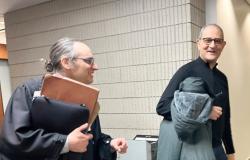The president of the American Financial Markets Regulatory Authority (SEC) Gary Gensler will leave his post early, according to the SEC, on January 20, the day of the inauguration of Donald Trump, who had said he wanted to dismiss him.
The president of the American Financial Markets Regulatory Authority (SEC) Gary Gensler will leave his post early, according to the SEC, on January 20, the day of the inauguration of Donald Trump, who had said he wanted to dismiss him.
The news, announced in a press release published Thursday, gave a boost to the price of bitcoin, Gary Gensler being considered in the industry as the sworn enemy of cryptocurrencies.
In the minutes that followed, the queen digital currency set a new all-time high, at $98,473.64 per unit.
During his campaign, Donald Trump announced his intention to replace Gary Gensler as soon as he came to power.
In the absence of a clear legislative framework, this former banker chose a repressive approach to digital currencies, which he intended to regulate like traditional financial securities.
On this contested legal basis, the SEC sued three of the largest exchanges, Binance, Coinbase and Kraken, as well as a series of smaller companies.
It nevertheless suffered several legal setbacks, which pushed it to authorize the marketing, at the start of the year, of new investment products, called ETFs (exchange traded funds), which allow it to benefit from the fluctuations of bitcoin without buy it directly.
Until now Gary Gensler had not indicated that he was considering a possible early departure.
Donald Trump’s desire to get rid of him before the end of his mandate had caused a debate between lawyers and academics in the absence of established case law.
It is generally agreed that the future American president could have appointed a new chairman of the SEC but could not have forced Gary Gensler to leave the regulator’s board, of which he is one of the five members.
Appointed by President Joe Biden, the sixty-year-old was theoretically not expected to complete his five-year term on the SEC board until April 2026.
Under his governance, “the SEC fulfilled its mission and applied the law without apprehension and without favoritism,” commented Gary Gensler, quoted in the press release.






